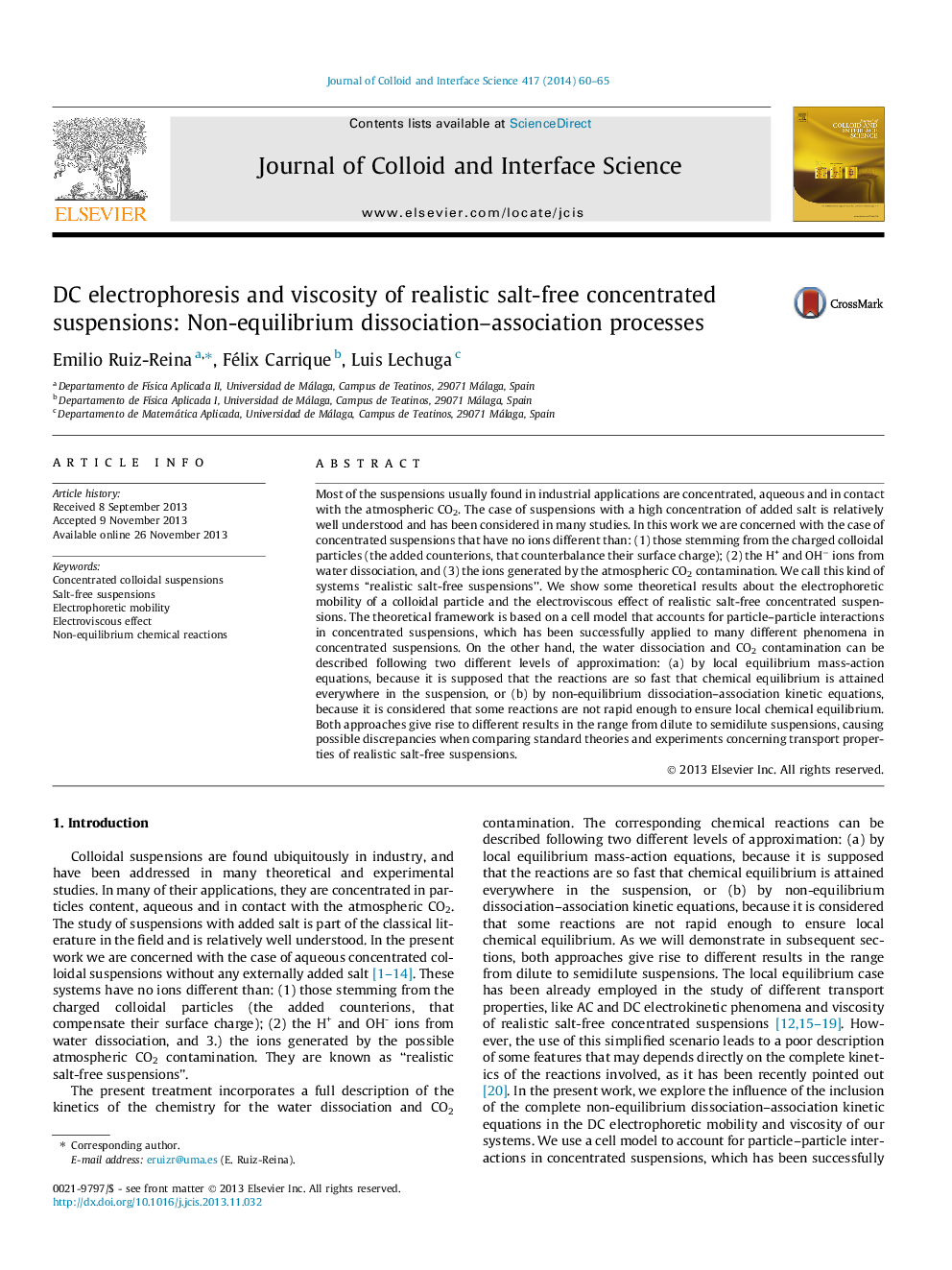| کد مقاله | کد نشریه | سال انتشار | مقاله انگلیسی | نسخه تمام متن |
|---|---|---|---|---|
| 607542 | 1454578 | 2014 | 6 صفحه PDF | دانلود رایگان |

• Theoretical modelling of concentrated “realistic salt-free suspensions”.
• Influence of CO2 and H2O derived ionic species.
• Added non-equilibrium dissociation–association kinetic equations.
• Augmented electroviscous coefficient and DC electrophoretic mobility.
Most of the suspensions usually found in industrial applications are concentrated, aqueous and in contact with the atmospheric CO2. The case of suspensions with a high concentration of added salt is relatively well understood and has been considered in many studies. In this work we are concerned with the case of concentrated suspensions that have no ions different than: (1) those stemming from the charged colloidal particles (the added counterions, that counterbalance their surface charge); (2) the H+ and OH− ions from water dissociation, and (3) the ions generated by the atmospheric CO2 contamination. We call this kind of systems “realistic salt-free suspensions”. We show some theoretical results about the electrophoretic mobility of a colloidal particle and the electroviscous effect of realistic salt-free concentrated suspensions. The theoretical framework is based on a cell model that accounts for particle–particle interactions in concentrated suspensions, which has been successfully applied to many different phenomena in concentrated suspensions. On the other hand, the water dissociation and CO2 contamination can be described following two different levels of approximation: (a) by local equilibrium mass-action equations, because it is supposed that the reactions are so fast that chemical equilibrium is attained everywhere in the suspension, or (b) by non-equilibrium dissociation–association kinetic equations, because it is considered that some reactions are not rapid enough to ensure local chemical equilibrium. Both approaches give rise to different results in the range from dilute to semidilute suspensions, causing possible discrepancies when comparing standard theories and experiments concerning transport properties of realistic salt-free suspensions.
Figure optionsDownload high-quality image (80 K)Download as PowerPoint slide
Journal: Journal of Colloid and Interface Science - Volume 417, 1 March 2014, Pages 60–65